#Bohemia-Moravia
Photo

(via Free 10 Hitler Stamps - Pencil Ink)\
...These valuable stamps were issued by the short-lived nation of Bohemia-Moravia. They are much sought after. Now they are becoming SCARCE.
Littleton was one of the premiere stamp and coin hobby companies, out there pushing dreck onto the unsuspecting public...
#Free 10 Hitler Stamps#ad#comics#vintage#1950s#Bohemia-Moravia#back pages#coin dreck#also stamp dreck
12 notes
·
View notes
Text



Spring Rituals in the former Czechoslovakia.
40 notes
·
View notes
Text
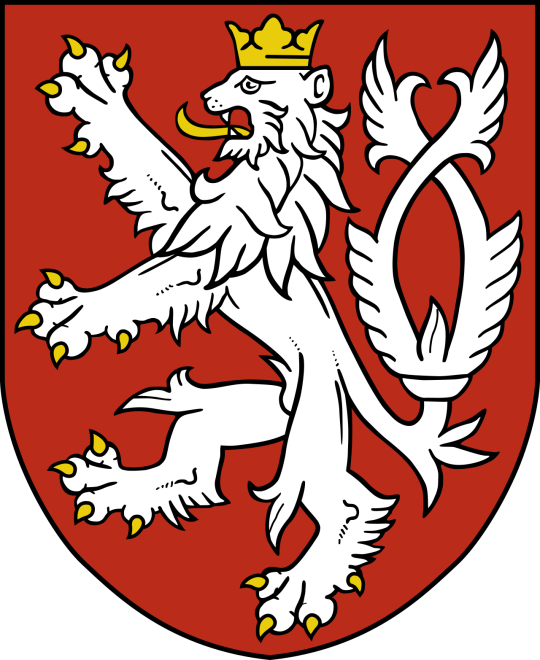
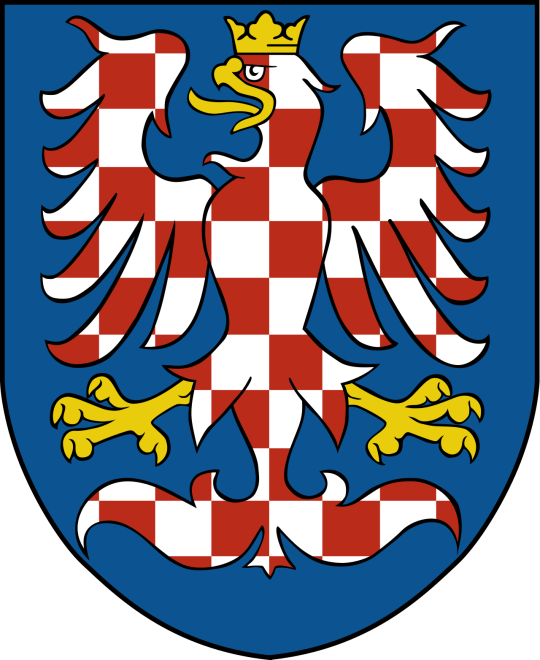
Heraldry and Emblem Wars Bonus Round
7 notes
·
View notes
Note
Idk if this is really allowed to ask, but to the minorities in the Austrian Hungarian empire, what do you think about having to fight against a country you don’t care about/ a country which is of your same nationality?
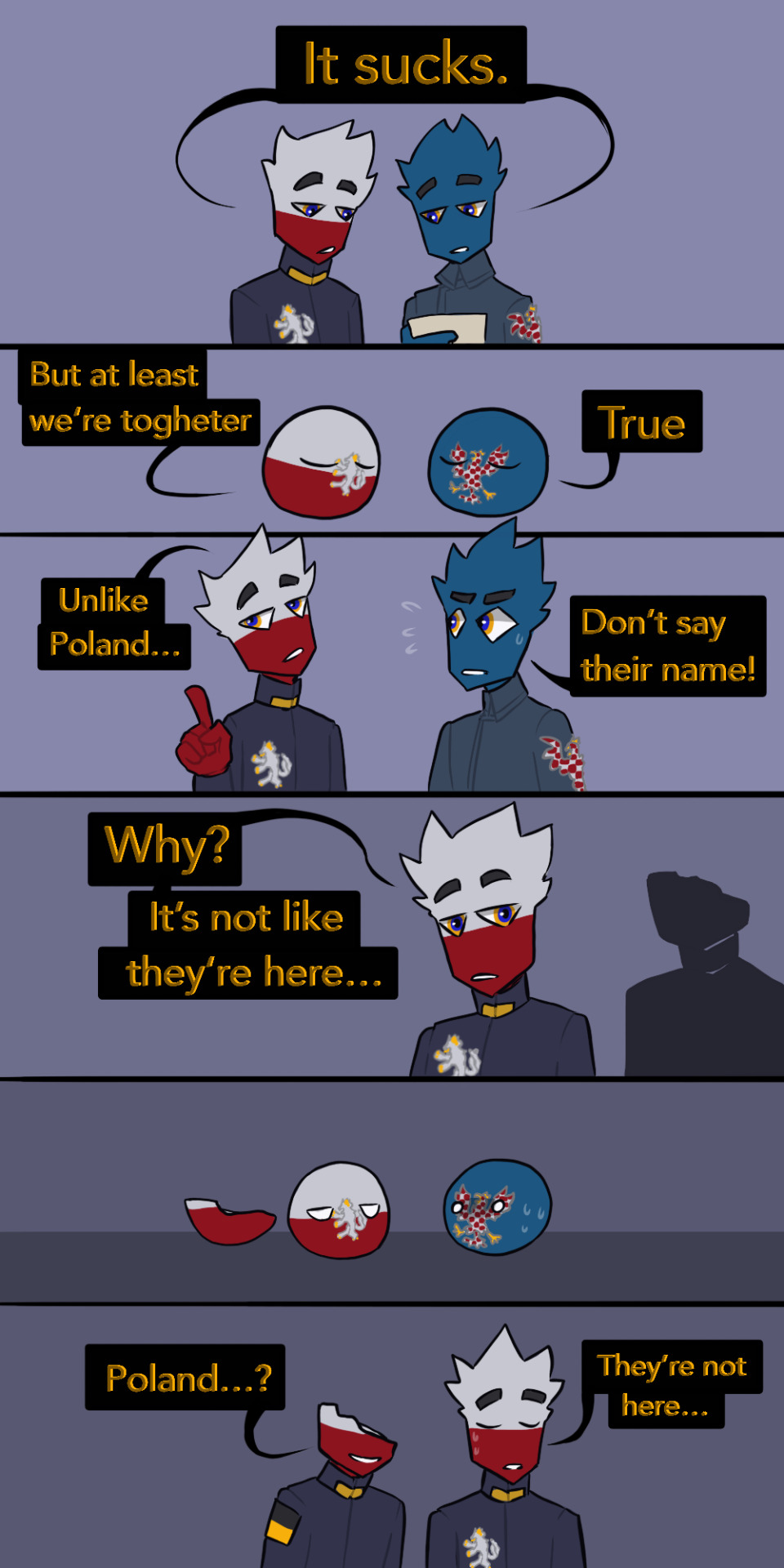

(Bohemia and Poland's flags are basically the same , so to distinguish them I used the coat of arms, also well Poland is in pieces now so it's pretty easy to spot the difference...)
(The map from where I'm basing the Ethno-linguistic parts of Austria-Hungary)

49 notes
·
View notes
Text
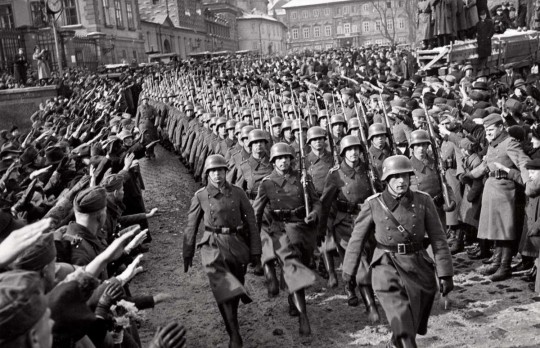
Des troupes allemandes paradent devant le château de Prague après avoir violé les accords de Munich signés 6 mois auparavant en envahissant et occupant le reste de la Bohême et de la Moravie pour y instaurer un protectorat allemand de Bohême-Moravie – Prague – Tchécoslovaquie – 15 mars 1939
#avant-guerre#pre-war#annexions#armée allemande#german army#heer#parade militaire#military parade#bohême#bohemia#moravie#moravia#protectorat de bohême-moravie#protectorate of Bohemia and Moravia#prague#tchécoslovaquie#czechoslovakia#15/03/1939#03/1939#1939
8 notes
·
View notes
Text
Alfons Mucha ['alfɔns 'muxa] (Ivančice, Moravia, Imperio austriaco.
Lefèvre Utile Galletas de champán-Alfonso Mucha-Fecha: 1896-Estilo: Art Nouveau (Moderno)-Género: comercial-Medios de comunicación: litografía

Alfons Mucha ['alfɔns 'muxa] (Ivančice, Moravia, Imperio austriaco; 24 de julio de 1860 - Praga, Protectorado de Bohemia y Moravia; 14 de julio de 1939) fue un pintor y artista decorativo checo, ampliamente reconocido por ser uno de los máximos exponentes del Art Nouveau.
Sus habilidades para el canto le permitieron continuar su educación secundaria en Brno, capital de Moravia; sin embargo desde niño se sintió principalmente atraído por el dibujo.
Trabajó en empleos de pintura decorativa en Moravia, principalmente para puestas teatrales. En 1879 se mudó a Viena para trabajar con una compañía vienesa de diseño teatral logrando informalmente completar su educación artística. Cuando en 1881 un incendio destruyó el negocio de sus empleadores, regresó a Moravia, trabajando de manera independiente, haciendo pinturas decorativas y retratos. El conde Kart Khuen de Mikulov lo contrató para decorar con murales el castillo de Hrusovany Emmahof, y quedó tan gratamente impresionado que acordó apadrinar el aprendizaje formal de Mucha en la Academia de Bellas Artes de Múnich.
Perteneció a la masonería y llegó a ser Gran Maestro de la Gran Logia de Checoslovaquia. Además de estar muy interesado en el esoterismo, teniendo relación con otras organizaciones esotéricas e iniciáticas aparte de la masonería, en la que también llegó a ostentar el grado 33° del Rito Escocés Antiguo y Aceptado.
Mucha se mudó a París en 1887 y continuó sus estudios en la Academia juliana y en la Académie Colarossi, produciendo al mismo tiempo ilustraciones para revistas y publicidad.
Su salto a la fama lo logró con su primer cartel litográfico para la actriz Sarah Bernhardt y su Théâtre de la Renaissance, el cartel anunciaba la obra Gismonda de Victorien Sardou, apareció en los primeros días de enero de 1895 en los muros de París, y causó una auténtica sensación. Sarah Bernhardt ofreció inmediatamente a Mucha un contrato de exclusividad por seis años. Los carteles realizados para ella contribuyeron a difundir la fama de la actriz más allá de las fronteras de Francia. Hasta 1901, Mucha no solo fue responsable de los carteles publicitarios, sino también de las escenografías y los vestuarios del Théâtre de la Renaissance. Fue esta obra, con su estilo exuberante y estilizado, lo que le dio tanto fama como numerosas comisiones.
https://es.wikipedia.org/wiki/Alfons_Mucha
#Alfons Mucha ['alfɔns 'muxa] (Ivančice Moravia Imperio austriaco; 24 de julio de 1860 - Praga Protectorado de Bohemia y Moravia; 14 de julio#¿Esta es la imagen y algunos datos (O no) la “Historia” la pones tú? ¡La tuya! ¿Lo harás...?
3 notes
·
View notes
Text
1942-Lidice massacre


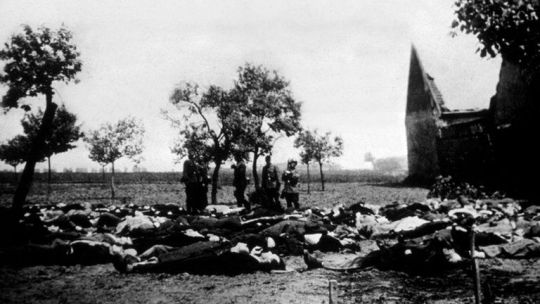
The Lidice massacre is perpetrated as a reprisal for the assassination of Obergruppenführer Reinhard Heydrich.
4 notes
·
View notes
Text
OLD FASHION COOKING RECIPE OF THE WEEK: APPLE AND PEACH CONSERVE #cooking #recipe #food #amish #mennonites #pennsylvania #dutch
OLD FASHION COOKING RECIPE OF THE WEEK: APPLE AND PEACH CONSERVE #cooking #recipe #food #amish #mennonites #pennsylvania #dutch
APPLE AND PEACH CONSERVE
2 cups apples, chopped
2 cups peaches, chopped
juice of 2 lemons
3 cups sugar
Use tart unpeeled apples and firm ripe peaches, cut into small pieces. Combine with lemon juice and sugar. Cook slowly until the apple is transparent (about 20 minutes). Pour into sterilized glasses, seal. Makes 7 6-oz. glasses.
PENNSYLVANIA DUTCH COOKERY
In 1683 the Plain Sects began to…

View On WordPress
#apple and peach conserve#German#Mennonites from Switzerland and Holland#Moravians from Bohemia and Moravia#Pennsylvania#Pennsylvania Deutsch#Pennsylvania Dutch#the Amish#the Dunkards#the French Huguenots#the Schwenkfelds
2 notes
·
View notes
Text

BÖHMEN & MÄHREN - GRAUPEN - MARIA SCHEIN / KRUPKA - BOHOSUDOV, Gruss aus...
#Maria Schein#Mariaschein#pocztówka#kartka#Bohemia#Moravia#Bohmen#Mahren#post card#litho#litografia#gruss aus#Czechy#czech
0 notes
Text
Ej od Buchlova might just be the best song ever
1 note
·
View note
Photo

Allied proposals for partition of Germany after World War 2
by theflagmapguy_2.0
At the Potsdam Conference (17 July to 2 August 1945), after Germany's unconditional surrender on 8 May 1945, the Allies officially divided Germany into the four military occupation zones — France in the southwest, the United Kingdom in the northwest, the United States in the south, and the Soviet Union in the east, bounded on the east by the new Poland-Germany border on the Oder-Neisse line. At Potsdam, these four zones in total were denoted as 'Germany as a whole', and the four Allied Powers exercised the sovereign authority they now claimed over Germany in agreeing 'in principle' to the ceding of territory of the former German Reich east of 'Germany as a whole' to Poland and the Soviet Union. In addition, under the Allies' Berlin Declaration (1945), the territory of the extinguished German Reich was to be treated as the land area within its borders as of 31 December 1937. All land expansion from 1938 to 1945 was hence treated as automatically invalid, including Eupen-Malmedy, Alsace-Lorraine, Austria, Lower Styria, Upper Carniola, Southern Carinthia, Bohemia, Moravia, Czech Silesia, Danzig, Poland, and Memel. • 🗣️ What's your favorite proposal from these?
209 notes
·
View notes
Text
Reinhard Heydrich

These are some facts and curiosities about Reinhard Heydrich:
He was born on the 7 March 1904 in Halle.
He was often mocked in his youth as Moses Handel, as it was rumored that he had Jewish ancestors, but it was never proven.
Both his parents were passionate about music and gave birth to a lifelong passion for the violin in their son.
In 1922 he entered the navy, at the naval academy in Kiel but he was discharged because, after having had an affair with the daughter of one of his superiors, he abandoned her for a younger woman.
He join the Nazis in 1931 when Himmler offered him to be the head of the SD, the segret service in the SS. He was given that position because Himmler was impressed by his Aryan appearence, self- assurance and thorough approach to the assigniment.
At the time he wasn’t a big shoot in the Nazis: he worked in a small office and he didn’t gain many money.
After Adolf Hitler took power in 1933, Heydrich was placed in command of the Gestapo in 1934 and dealt with those organizations and people who could harm the Nazi cause.
He himself later organized the attack on the Gleiwitz radio station, called "Operation Himmler", which started the Second World War.
On 20 January 1942 Heydrich held the sadly famous conference in Wannsee in which the "Final Solution of the Jewish question" was planned.
In December 1941 he became the protector of Bohemia and Moravia, and he held a fight against the Czech resistance.
Heydrich became the ‘’de facto’’dictator of the area, ordering repression and persecution,so much that he earned the nickname The Executioner of Prague (Der Henker von Prag).
On 27 May 1942 a commando composed of members of the Czechoslovakian army in exile, trained by the British SOE made an attempt on Heydrich's life. He died on the 4th of June 1942.
To avenge Heydrich, the Nazi murdered all 192 males over the age of 15 living in the village of Lidice, near Prague, and deported all the women and children. Subsequently, all the buildings were burned, and the rubble was then removed to definitively erase the place from the geographical maps.
"Operation Reinhard" was named after Heydrich, the plan for the construction of the first three German extermination camps: Treblinka, Sobibór and Bełżec.
He was a great sport man: he like fancing and he was a horseman.
He cared about his victims as much as we care about the ant colonies in our yards
He open a bordel
He married Lina Von Osten and they had four children:
Klaus Heydrich ( 1933-1943)
Heider Heydrich (1934-)
Silke Heydrich ( 1939-)
Marte Heydrich ( 1942-)
Sources:
Wikipedia: Reinhard Heydrich
Military Wiki: Reinhard Heydrich
The Iron Heart Reinhard Heydrich by Johana Connor
HHhH by Laurent Binet.
I DON'T SUPPORT NAZISM,FASCISM OR ZIONISM IN ANY WAY, THIS IS AN EDUCATIONAL POST
52 notes
·
View notes
Text


Flag Wars Bonus Round
7 notes
·
View notes
Text
@graveyarddirt one mission accomplished!!!
The ethnographic nativity scene by painter Maria Fischerová-Kvěchová (1892-1984) has been one of the most beautiful and popular cut-out nativity scenes for several generations. The author created it with love, visiting different parts of Bohemia, Moravia and Slovakia, where she studied and painted costumes for her sketchbooks. Here we can find costumes from Chodsk, Pilsen, Moravian Slovácko, Wallachia, Vlčnov and various parts of Slovakia.
Free printables here.
33 notes
·
View notes
Text
∗❀𓇣❁introducing you the south bohemian culture❁𓇣❀∗
ok so since noone really cares about south bohemian culture anymore, i'll to try to embrace it here on my blog, at least so that people know it exists. for the ones who don't know, Bohemia is an area in Czechia, that takes up most of the country. in czech, it is called 'Čechy'. now, you might notice the similarity between the words chechia and čechy - yes, my whole country is called after this part of it, even though it contains three regions: Bohemia (Čechy), Moravia (Morava) and Silesia (Slezsko). moravians and silesians take care of their culture pretty well in these trying times, but the bohemians, being the most influenced by the west culture, usually don't. so here's me, the tiniest person on tumblr, trying to do something about it! yay!!
❀first i'd like to say something about the name of this entire region. so according to an old, veery old myth, at first, all the slavic tribes lived in one place, 'v matičce Rusi' (in the mother of all, Russia). But the tribes and families started to lack space for their houses, animals and children, and thus two brothers, Čech and Lech, decided to go search for a new place for them. they went a long, long way, until they came to today's czechia, specifically to the mountain Říp (it actually exists). the forefather Čech climbed on the top of it, he looked around and saw, that they came in their promised land. it had beautiful mountains on the sides and fertile meadows in the middle, miles and miles of dark woods, and it was rich in milk and honey. and when he asked what it should be called, the slavs shouted in excitement that it should be called after the forefather himself. (i love this story a lot<3)
❀next post is going to be about the south bohemian region itself and it's parts! i'm planning on still posting art on this blog, but making it more representing of my slavic culture. i hope someone finds this interesting!
also sorry if i made any english mistakes :)
#slavic#rumour#old story#old rumour#slavic legend#slavic culture#čumblr#czechia#czech culture#bohemia#bohemian culture#south bohemia#obrozujeme#slavic representation#culture#history#slavic history#czech history#czech legend
61 notes
·
View notes
Text
Alfons Mucha ['alfɔns 'muxa] (Ivančice, Moravia, Imperio austriaco.
El juicio de París-Alfons Mucha-Fecha: 1895-Estilo: Art Nouveau (Moderno)-Género: pintura mitológica

Alfons Mucha ['alfɔns 'muxa] (Ivančice, Moravia, Imperio austriaco; 24 de julio de 1860 - Praga, Protectorado de Bohemia y Moravia; 14 de julio de 1939) fue un pintor y artista decorativo checo, ampliamente reconocido por ser uno de los máximos exponentes del Art Nouveau.
Sus habilidades para el canto le permitieron continuar su educación secundaria en Brno, capital de Moravia; sin embargo desde niño se sintió principalmente atraído por el dibujo.
Trabajó en empleos de pintura decorativa en Moravia, principalmente para puestas teatrales. En 1879 se mudó a Viena para trabajar con una compañía vienesa de diseño teatral logrando informalmente completar su educación artística. Cuando en 1881 un incendio destruyó el negocio de sus empleadores, regresó a Moravia, trabajando de manera independiente, haciendo pinturas decorativas y retratos. El conde Kart Khuen de Mikulov lo contrató para decorar con murales el castillo de Hrusovany Emmahof, y quedó tan gratamente impresionado que acordó apadrinar el aprendizaje formal de Mucha en la Academia de Bellas Artes de Múnich.
Perteneció a la masonería y llegó a ser Gran Maestro de la Gran Logia de Checoslovaquia. Además de estar muy interesado en el esoterismo, teniendo relación con otras organizaciones esotéricas e iniciáticas aparte de la masonería, en la que también llegó a ostentar el grado 33° del Rito Escocés Antiguo y Aceptado.
Mucha se mudó a París en 1887 y continuó sus estudios en la Academia juliana y en la Académie Colarossi, produciendo al mismo tiempo ilustraciones para revistas y publicidad.
Su salto a la fama lo logró con su primer cartel litográfico para la actriz Sarah Bernhardt y su Théâtre de la Renaissance, el cartel anunciaba la obra Gismonda de Victorien Sardou, apareció en los primeros días de enero de 1895 en los muros de París, y causó una auténtica sensación. Sarah Bernhardt ofreció inmediatamente a Mucha un contrato de exclusividad por seis años. Los carteles realizados para ella contribuyeron a difundir la fama de la actriz más allá de las fronteras de Francia. Hasta 1901, Mucha no solo fue responsable de los carteles publicitarios, sino también de las escenografías y los vestuarios del Théâtre de la Renaissance. Fue esta obra, con su estilo exuberante y estilizado, lo que le dio tanto fama como numerosas comisiones.
https://es.wikipedia.org/wiki/Alfons_Mucha
#Alfons Mucha ['alfɔns 'muxa] (Ivančice Moravia Imperio austriaco; 24 de julio de 1860 - Praga Protectorado de Bohemia y Moravia; 14 de julio#¿Esta es la imagen y algunos datos (O no) la “Historia” la pones tú? ¡La tuya! ¿Lo harás...?
2 notes
·
View notes